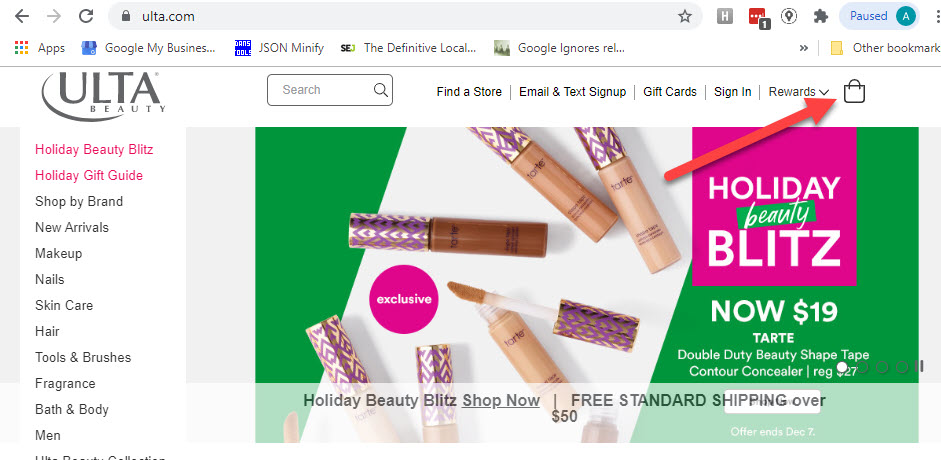When asked by a less digital-savvy acquaintance, “What do you do?” I usually answer by saying, “Connecting people and businesses.” Typically, that is what we do. In SEO, our job is to strategize and tweak our clients’ content to make it what searchers are looking for, so they click and convert—whether that is a newsletter sign up or SAAS purchase. But getting people to reach your content is just one part of the puzzle; they also have to understand it. Like longtail bottom-of-funnel keywords, it isn’t about the search volume alone. It is about giving those people the best experience on your website, thus increasing their likelihood to convert.
We’ve already covered accessible content and how to get started making your site accessible in previous posts. In this one, we will examine different SEO tactics benefitting accessibility, including images, typography (yes it matters), and schema.
Note: WCAG standards change. W3C is working on WCAG 2.2 at the time this article was written.
Images
Accessibility compliance conflicts with the tangible benefits of Image SEO. So, how do we balance the competing needs of business and usability? The requirements for each type of image are different. And as you may have read in the Accessible Web Content: The Quick Start Guide mentioned earlier, not all images should have an ALT text.
Determining Image Purpose
Understanding an image’s purpose dictates which requirements apply. Images for links or buttons are classified as functional images for accessibility.

On the other hand, if the image conveys information, then its purpose is informative.

Additionally, decorative images don’t convey information and are not considered functional.

Long story short: An image should have an ALT tag unless it is decorative. You can ask yourself these questions to determine your image’s purpose:
- Is the image conveying information and not captioned? Informational
- Does the image act as a button or link? Functional
- Does the image convey emotion? Informational
- Is this image contributing to understanding the page’s topic? Informational
- Is the image doing none of the above? Most likely decorative.
Still can’t decide which image type you are dealing with? W3’s ALT Decision Tree provides an overview of how to categorize your images. Or, you can read this post on identifying decorative images for more info.
It is important to keep in mind that there still exists some gray area around image accessibility. The difference between an emotionally-informative image and “eye candy” decorative imagery is subjective. Ultimately, it is the author’s determination and the image’s context that impacts its purpose.
More Than ALT Tags
Image SEO doesn’t only include ALT tags. I’ll touch on the basics here, but if you would like to learn more, I recommend Ahref’s article on image SEO.
In addition to making sure you have the appropriate ALT tags for your images, there are other things to consider when it comes to images and SEO:
- Descriptive file name
- Format matches usage
- Compressed file size
- Sized for its usage
- EXIF data
- Structured data
Video
Crawlable transcripts and closed-captioning are quick accessibility wins and benefit SEO. Let’s not forget about video schema markup, too! Why pass up an opportunity to increase your video’s ability to appear in SERPs? Don’t answer that; it’s rhetorical.
Video accessibility covers closed-captioning, transcription, and audio descriptions for visual-only videos. Transcripts and audio descriptions should be available for users to download with the video. You will have to decide whether you want to outsource this work or do it yourself. Sites such as Amara.org offer free tools for the DIY set. Many closed-captioning services have the closed-caption transcript available as well. If you don’t have the time or resources to do this yourself, services such as the Rev can handle transcribing for you.
Typography
Should SEO care about fonts for accessibility? Yes. Accessible typography is a deep topic, particularly for website design.
If your copy is difficult for your site visitors to see and read, no matter how good it is, it will be ineffective. And readability affects bounce rate, reading depth, and time on page; all of these things are important SEO factors.
Making a Case for Accessibility
In-house, agency, or freelance, if you have been advocating for making improvements to your online content for accessibility, there is a good chance your recommendations have hit roadblocks. Navigating multiple stakeholders, limited development resources, time, accessibility complexity, and opaque ROI are some of the common reasons companies have been reluctant to implement WCAG.
Audience size and spending power are two compelling data points to get buy-in. According to data from the American Institutes for Research, 22 million working-age adults in the US have a disability. These same working-age adults also own $21 million in discretionary funds. These numbers will increase as our tech-savvy generations age. Not making your content or products accessible is leaving money on the table.
Ensuring customers can find and reach your content is core to SEO. No one converts on unreachable pages or content. Treat accessibility the same way; pages should be navigable by a screen reader or keyboard commands. Readability, ALT tags, and schema aren’t new concepts. If they aren’t already, incorporate them into your routine!
No one wants to be the person responsible for an ADA lawsuit.
For more information on accessible web content, check out our Accessibility Guide for Digital Marketers.
Interested in helping make the web accessible? The A11Y Project community is working to make web accessibility easier.









